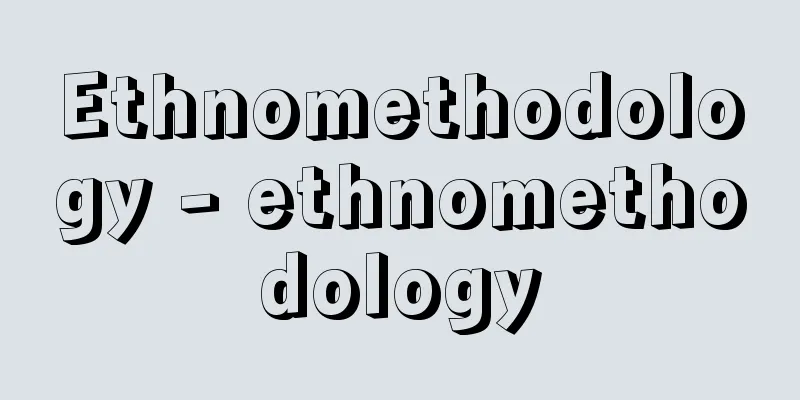Shindatsu Sodo

|
A peasant uprising occurred in Shinobu and Date counties in Mutsu Province during the Edo period. Also known as the Shindachi Uprising, there were uprisings in the mid-Edo period and at the end of the Edo period. In 1729, the shogunate magistrate implemented measures to increase the tax rate, including raising the tax exemption, and in response, the peasants rebelled, filing lawsuits to Edo and filing complaints, and fleeing to other feudal lords' territories. A total of 89 people were executed, including two executed by execution at the death penalty and nine exiled to remote islands. In 1749, the shogunate magistrate took up the post and implemented measures to increase the tax rate amid a poor harvest, so the peasants rebelled and stormed the magistrate's office, demanding reductions and exemptions, as well as payment of stone equivalents and deferred payment. The magistrate asked for support from the Fukushima and Sendai domains, and began arresting and executing the rebellion leaders, but some of the peasant demands were also accepted, and the magistrate died in agony the following year. The 1866 uprising was called the Sekai-kai riots, and was a revolt against the shogunate's introduction of a new seal system for the sale of raw silk and silkworm eggs, and the approval of businesses that tried to make profits from commission fees. Known for being led by the populist thinker Kanno Hachiro, the revolt demanded a reduction in rice prices and a reduction in the requisition of men and horses, and was carried out by the uchikowashi. Source : Heibonsha Encyclopedia About MyPedia Information |
|
江戸時代,陸奥(むつ)国の信夫(しのぶ)郡・伊達(だて)郡で起きた百姓一揆。信達一揆ともいわれ,江戸時代中期と幕末期の一揆がある。1729年幕府代官が定免(じょうめん)の引上げなど年貢(ねんぐ)の増徴策を行ったことに対して,百姓が一揆を結び,江戸への越訴(おっそ)や強訴(ごうそ),ほかの大名領内への逃散(ちょうさん)などに及んだ。獄門2人・遠島9人を含めて89人の処分となった。1749年赴任した幕府代官が凶作のなかで年貢増徴策を打ち出したため,一揆して代官所に押し寄せ,減免のほか石代納(こくだいのう)や延納などを要求した。代官は福島藩・仙台藩に応援を求め,一揆指導者の逮捕を始め,処刑に及んだが,百姓側の要求も一部は受け入れられ,代官は翌年に悶死したという。1866年の一揆は世直し騒動とよばれ,幕府が生糸(きいと)・蚕種(さんしゅ)の売買に改印(あらためいん)制を導入して手数料で利益を上げようとした業者を認可したのに対して蜂起したもの。民衆思想家の菅野(かんの)八郎が指導したことで知られるが,米値の引下げ,人馬徴発の軽減などを要求して打毀(うちこわし)を行った。
出典 株式会社平凡社百科事典マイペディアについて 情報 |
Recommend
Le Blon, JC (English spelling) LeBlonJC
...Watercolor-like color printing using aquatint ...
Lofoten [Islands] - Lofoten
A chain of islands stretching 200km from northeast...
Miyato Island
An island at the mouth of Matsushima Bay in centr...
Izumi Province
One of the five Kinai provinces. The old name of ...
Kakei Byakurenkyo Rebellion
…At the end of the Qianlong period, in Gansu and ...
Shoinban - Shoinban
The title of the Edo Shogunate's Bangata (gua...
Invoice - Panoramic
A restriction, such as a condition or time limit, ...
Ken Ichinose - Ken Ichinose
…In the Edo period, the preference for Chinese ca...
Shinjuyoigoushin - Love Suicide Evening
Joruri Gidayubushi (a type of Japanese drama with...
Meprobamate
The generic name of 2-methyl-2-propyl-1,3-propane...
Airborne spinning top - Airborne spinning top
...One theory is that the trend started when sumo...
Hanshi paper
A type of washi paper. The name was first seen in...
"The Diary of Anne Frank"
…the girl known for the so-called “Diary of Anne ...
National Pillar Association
A lay Buddhist sect based on Nichiren doctrine. I...
Jesuit Theatre
…School plays were the mainstream of Western Euro...

![Inabu [town] - Inabu](/upload/images/67caefd9b07b7.webp)



![Kawabe [town] - Kawabe](/upload/images/67cb46e27ed2f.webp)



